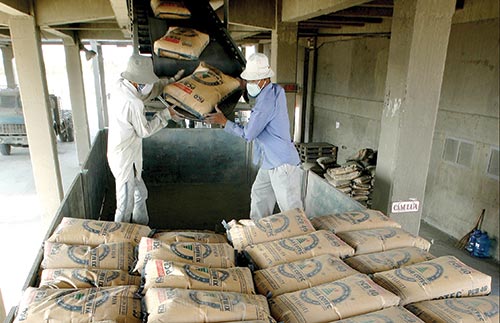Cement industry pleads for energy efficient tech

Green production processes have become both an environmental and a finacial consideration
According to Vietnam Building Material Association (VBMA), cement production is one of Vietnam’s most energy-intensive industries. Vietnam is currently home to 51 cement plants with 73 production lines and a total capacity of 73.45 million tonnes per annum. This figure is expected to expand to 81 million tonnes by 2015.
Under the Vietnamese government plan for the local cement industry until 2020, all cement producers with clinker production capacity from 2,500 tonnes per day will have to apply waste heat recovery (WHR) solutions in 2015 to boost energy efficiency. The application of WHR will significantly help reduce the country’s energy burden.
Industry experts said the waste heat from clinker production in the manufacturing process was the main energy offender.
Surapon Oonchuen, operations and maintenance manager of Siam Cement Group (SCG)’s Waste Heat Generation Power Plant said Vietnam’s cement industry offers huge potential for the Thai conglomerate to market its advanced WHR solutions.
“Vietnam is a developing nation with young population and fast pace of urbanisation. The construction industry therefore has a lot of potential, which leads to a high demand for cement,” said Oonchuen.
“The Vietnamese cement industry is in an early stage of WHR application where there might be some obstacles such as financial and know-how. However, this is a mandatory step that cement producers have to take to enjoy sustainability in the long-run,” she said.
Oonchuen said that WHR solutions helped save energy costs significantly, which accounted for a major part of operational expenses. She added that WHR improves sustainability by reducing CO2 emissions, and so from a business standpoint, the solutions would enhance competitiveness and help reduce a huge burden on the country’s electricity supply, which was a common issue in developing countries like Vietnam.
“WHR is not new to Vietnam, but only some cement-producing plants in the country have applied this technology. This means the cement industry is still discharging a large volume of CO2 into the environment,” Oonchuen said at a recent international symposium on Vietnam’s building material industry’s sustainable development co-organised by VBMA and the Ministry of Construction.
In 2007, SCG-Cement Building Materials began a focus on improving the production process to reduce energy use and greenhouse gas emission by utilising waste heat. The waste heat from clinker production in the cement manufacturing process is transformed into low pressure steam and then used to generate electricity, which is then used to help power the cement plant. The project to reuse waste heat reduces carbon dioxide emission (CO2) by 300,000 tonnes annually.
“We want to work with Vietnam’s government on applying WHR technology. As a regional pioneer and leader in sustainable development, we support the government’s direction for a sustainable cement industry of Vietnam in the long run, and WHR is just the very first step,” she said.
ThyssenKrupp’s senior project manager Markus Hastrich said at the symposium that the German company was seeking local partners to sell its second-generation cement grinding solutions. Loesche Gmbh’s Southeast Asia business director Philipp Stolzengurg also introduced their advanced cement mills to Vietnamse partners.
Ta Van Khao, technical advisor of Telin Technology and Infrastructure Joint Stock Company, agreed that foreign cement technologies would help save energy and reduce operational costs in the long term.
What the stars mean:
★ Poor ★ ★ Promising ★★★ Good ★★★★ Very good ★★★★★ Exceptional
Latest News
More News
- Going green to save a bundle (June 08, 2015 | 10:00)
- Green buildings: the rising trend (June 02, 2015 | 09:41)
- Green buildings – key to sustainable urban development in Vietnam (May 18, 2015 | 17:00)
- Feed-in tariffs continue to haunt green energy prospects (December 15, 2014 | 10:47)
- Building material types intrinsic to green ratings (December 09, 2014 | 11:56)
- Turning an eco- smart dream into reality (December 09, 2014 | 11:55)
- Green products enjoy a growing presence at Vietbuild Hanoi 2014 (December 01, 2014 | 10:06)
- Country profits from green building (November 24, 2014 | 11:02)
- Firms flout enviroment laws (November 17, 2014 | 10:48)
- Energy efficient sticks and carrots (November 10, 2014 | 15:30)
















 Mobile Version
Mobile Version